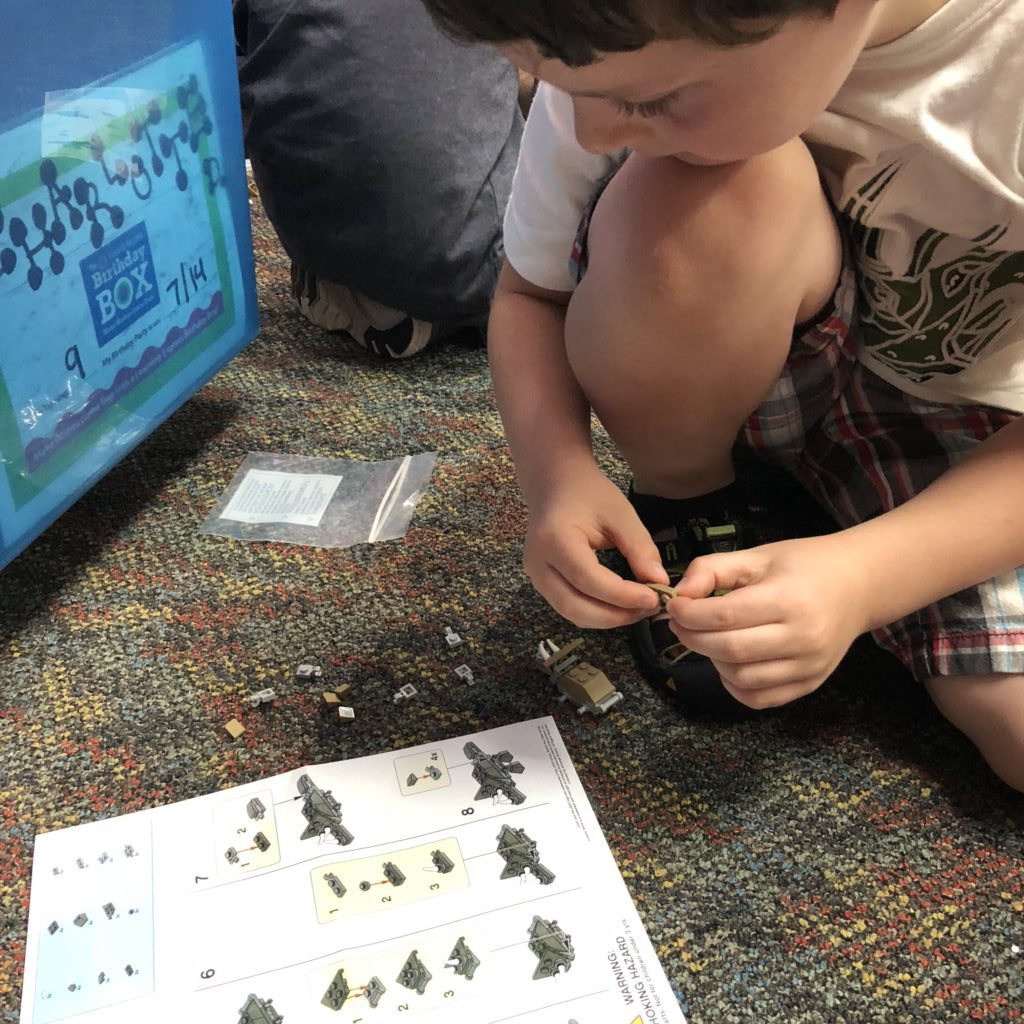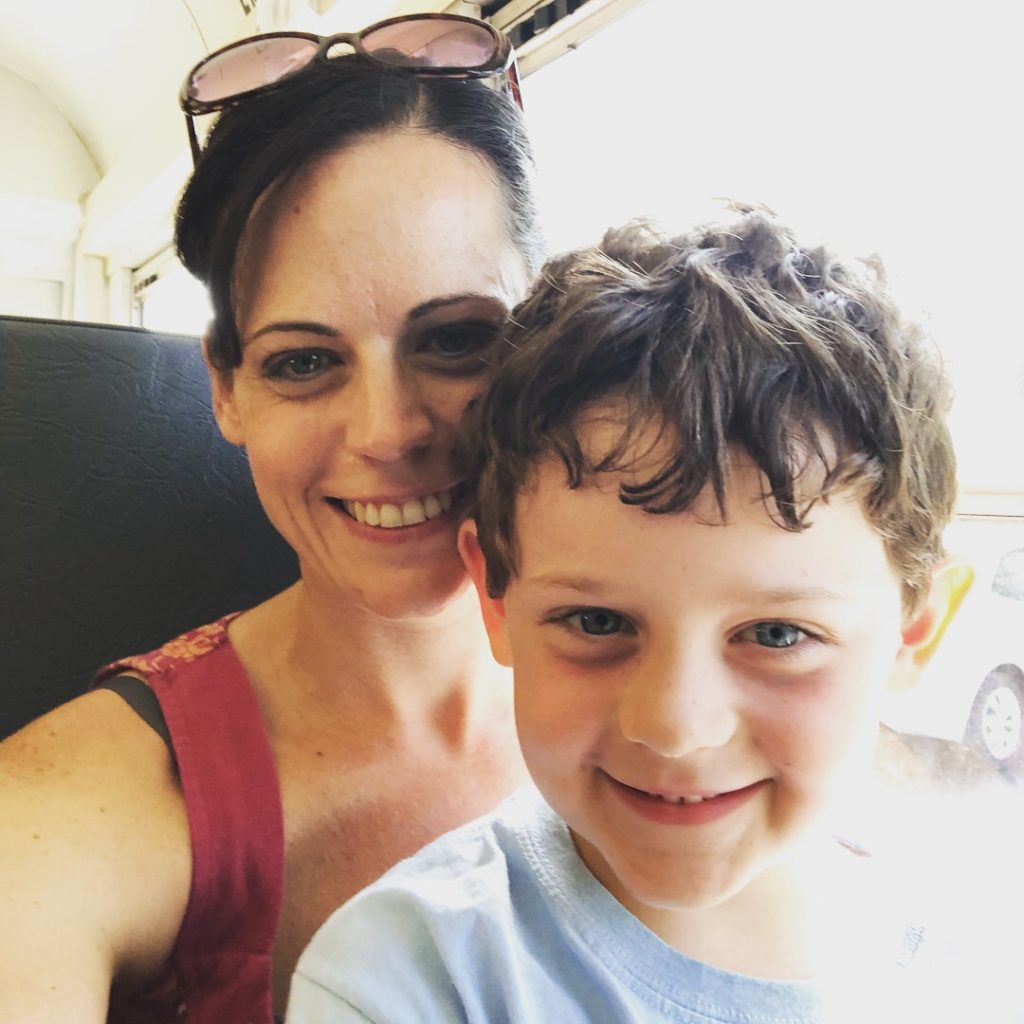Easton, my smart, sensitive first-born, is going through a rough patch this month. Although he isn’t talking about it much, all signs point to anxiety about starting kindergarten, or at least to the transition away from his familiar routines.
He’s been going to the same daycare center since he was 6 months old. He has been in class with many of the same friends for five years. They are more like siblings than friends. And when he starts kindergarten in August, not one of those friends will be at his new school.
Plus, Easton has been the anxious kid most of his life. He cried daily at daycare drop-off for months if not years. Every classroom transition was an ordeal I dreaded. Just a few short years ago, he was overwhelmed at birthday parties and even playdates, asking to go home shortly after we arrived.
Over the past years, I have watched him blossom. He has grown assertive to the point of being bossy, confident to the point of being obnoxious. He lives for birthday parties now and asks me every Saturday morning what “fun plans” we have with his friends that weekend.

Yes, my big boy has grown up so much. But that doesn’t mean that he doesn’t get anxious sometimes. At 5 and a half years old, I still have to cover the sensor of a public restroom toilet to make sure it doesn’t flush accidentally in order to avoid tears.
I wouldn’t change anything about my Easton. His sensitive nature also makes him perceptive, empathetic, and intuitive. But I have picked up some techniques over the years to help keep his anxiety in check and raise a happier, more well-adjusted child.
Note: I am not a mental health professional and these strategies are not a substitute for medical advice from your child’s pediatrician or a specialist. As a mom, trust your instincts and seek immediate assistance for any behavior that seems outside the limits of occasional worry or apprehension.
This post contains affiliate links. As an Amazon Associate, I earn from qualifying purchases. Read my full disclosure policy for all the boring details.
12 Strategies for Parenting an Anxious Child
1. Give a heads-up on what’s coming …
Much like me, Easton doesn’t do well with spontaneity. He’s methodical and likes to plan things out. It helps him feel in control. So I prepare him for what’s coming well in advance, often days ahead if it’s something that might cause significant anxiety. We go over what will happen and what he can expect, and then repeat this messaging more than once before it actually happens. Repetition helps to desensitize him.
2. But don’t dwell on the future.
There’s a fine line between being prepared and dwelling, though. Find that line. At a certain point, looking only to the future is no longer helpful. It’s coming whether you like it or not, and it’s largely out of your control. So once Easton has been given a warning of what’s coming, I minimize talking about it. It doesn’t need to be a daily conversation. Staying in the present helps to avoid worry about the future.
3. Start and end each day with positivity.
Just as dwelling on the future isn’t constructive, dwelling on the negative becomes a habit that’s hard to break. Encourage your child to focus on the positive instead of the negative each day. One the morning on our car ride to daycare, I ask Easton one thing he is looking forward to about the day, and I share one thing of my own. Then on the way home, I ask him to remember one good thing that happened to him that day. If he can easily give me one good thing (and some days he can’t), then I ask him what the BEST thing that happened that day was. I share my own moments from the day and explain why they were positive. Focusing on joy and showing how there is always, always, always something good that happens in each day is an important exercise and one that has gone a long way to change Easton’s attitude.
4. Teach a grounding activity.
Anxiety is like a bike going downhill without brakes – it spirals out of control quickly and is hard to stop. A simple grounding activity can bring you back to the present. I’ve taught Easton two different tricks. The first one works when he’s outside: I remind him to just look up at the big blue sky, take a few deep breaths, and notice what he sees there: focus on the colors and the shape of the clouds, and know that everyone is under the same big sky (including me). The second trick involves making a fist and gently squeezing: left first first, then right fist, and alternating 10-20 squeezes. I use this technique myself to calm down, and it’s very effective.

5. Get down on their level.
Towering over our kids and looking down on the tops of their heads means we don’t always get to look them in the eye. When soothing or calming, try crouching or kneeling next to your child so you are at eye level. I touch Easton’s shoulder or face to connect. This way, I can physically see if my words and actions are reaching him and making an impact. Don’t underestimate the power of affection to comfort your child either; sometimes all Easton needs is a big hug to make a difference.
6. Read a book.
Find books related to the topic bothering your child, and read, read, read. Books are a great way to talk about a topic without directly talking about it. Your child will feel validated that their fears are shared by others, and they can see the positive consequences of the characters who face their fears and overcome them. Easton and I have checked out some library books about starting kindergarten, and The Kissing Hand is a perennial favorite in our household whenever a period of separation anxiety starts up.
7. Focus on “time-ins.”
We give our kids time-outs when they misbehave, but do you ever give them “time-in”? This strategy described by Dr. Harvey Karp in The Happiest Toddler on the Block focuses on giving your child one-on-one dedicated attention for a prescribed amount of time. I think of it as “special time” with my big boy. Whether it’s building LEGOs while his brother is napping or creating an elaborate craft project with tape, scissors, and masking tape, making sure that Easton gets my undivided attention for some period of time, even just 15 minutes per day, goes a long way toward reducing behavioral issues.

8. Draw a picture.
Ask your child to draw a picture of what’s bothering them. Talk to them about what colors their fear might be, or what shape it might take. Ask questions about the drawing and listen to their answers to get at the heart of the matter. Easton is not much of an artist, but I felt reassured when he drew a picture of himself at kindergarten and asked me to spell out all the letters to write the name of his school. It showed me that he is both anxious and excited about what’s to come – not just filled with dread.
9. Reward bravery.
I’m not above gentle motivation (i.e., a well-placed bribe) and I believe in rewards for a job well done or even a hard effort. The positive reinforcement of a little treat after dinner or a new book before bed or a special outing goes a long way. I want Easton to know I see him struggling and I see him making a concerted effort and I recognize the bravery behind that effort. What I’ve learned is the reward doesn’t have to be big to have a big impact. A couple of quarters for his bank or a Friday night Happy Meal is just as effective to show him that I’m proud of how hard he’s trying.
10. Debrief before bed.
Bedtime is my favorite time with Easton. We read books together, snuggle under the covers, and just talk. If something has been bothering him and he needs to work through it, bedtime is the best chance for me to reach him. We usually start with a recap of his entire day, telling it like a story. From there, I can pull out one or two events to ask more questions about and help him to frame the negative aspects in a more positive light. I like to think it helps both of us fall asleep easier and sleep better too.

11. Know when to consult a professional.
As mentioned above, I’m not a professional, just another mom with an anxious child. Make sure you consult with a professional about your concerns to get answers and appropriate help as needed. Among the immediate red flags that should never be ignored are regressive behavior, significant lack of appetite, nightmares or trouble sleeping. Just as you would call the pediatrician if you suspect an ear infection, do the same when your child is showing signs of anxiety. It’s worth your own peace of mind to talk it through with a medical professional.
12. Keep your own anxiety in check.
As a mom who has struggled with anxiety herself, seeing Easton struggling hit me hard. Is this rough patch a normal phase, or should I get him right in to see a therapist? Will the whole school year be like this? Is it something I’m doing wrong? In exactly the same pattern I advised against above, I flashed forward to him starting school and envisioned the battles that would ensue about going, the trauma of school drop-off, and more. I made myself sick with worry, and suddenly both of us were crying at daycare drop-off. The problem? Now I was making his anxiety about me, and in doing so, I was making it worse for both of us.
As parents, we have to be strong for our children and put on a brave face for them when they can’t do it themselves. These techniques for helping your child cope with anxiety are effective for entire families and might even help you calm your own fears as well.

Since this phase started for us, I’ve found that starting and ending the day by focusing on the positive with Easton has helped me maintain a much more positive framework for myself as well. Positivity builds positivity and like gratitude, it’s a muscle that strengthens with use.
Watching my children struggle is the single hardest part about being a parent that I’ve encountered yet. You just want to make it right and stop their hurt. Deep breaths, mama. This too shall pass. Whether your child’s anxiety requires professional intervention or he grows out of it in a week or two, you will get through this.
Reach out to me any time to share your story or tell me what works for you. 💜














